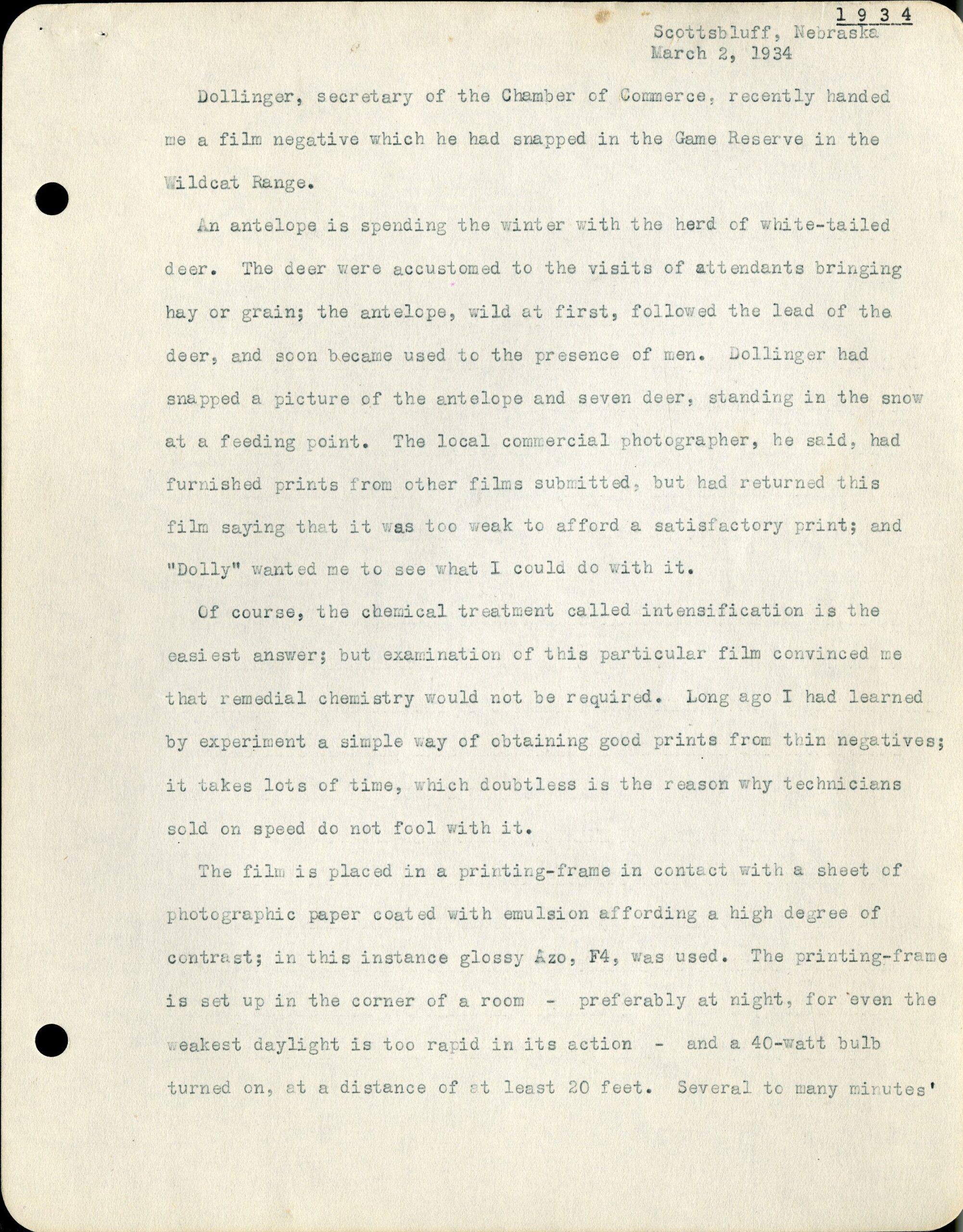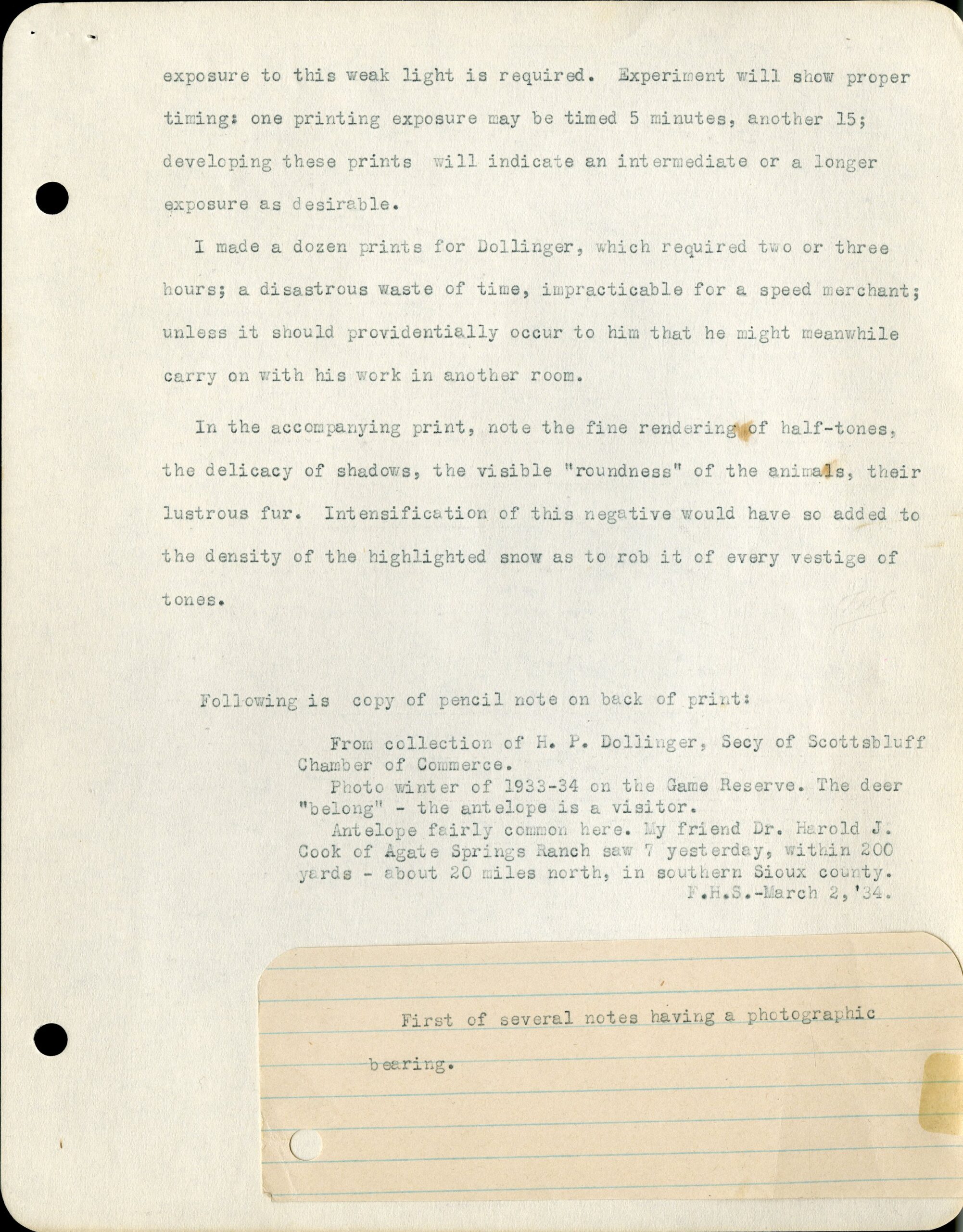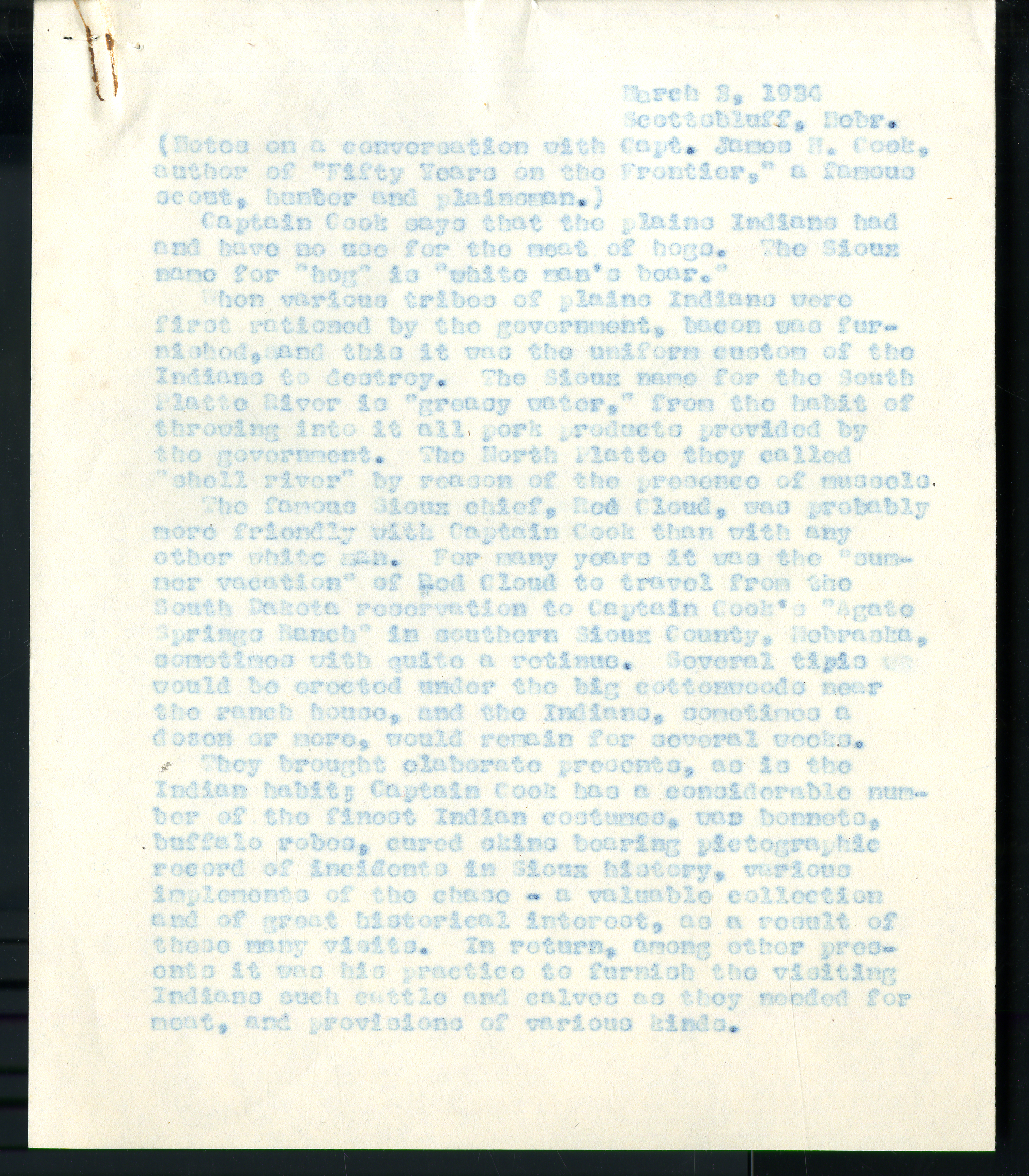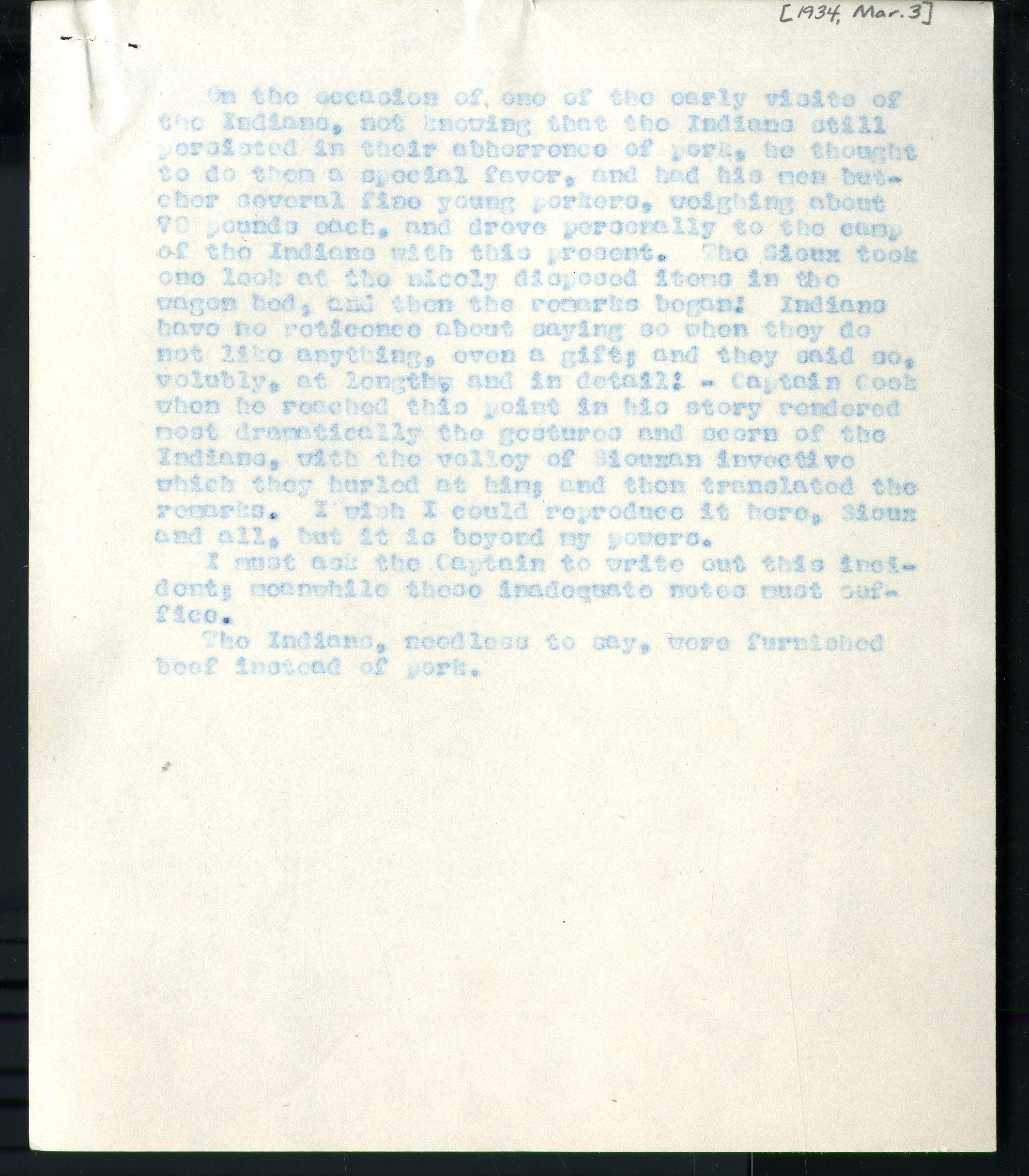Great Nebraska
Naturalists and ScientistsMarch 2, 1934

1934Scottsbluff, NebraskaMarch 2, 1934
Dollinger, secretary of the Chamber of Commerce, recently handed me a film negative which he had snapped in the Game Reserve in the Wildcat Range.
An antelope is spending the winter with the herd of white-tailed deer. The deer were accustomed to the visits of attendants brining hay or grain; the antelope, wild at first, followed the lead of the deer, and soon became used to the presence of men. Dollinger had snapped a picture of the antelope and seven deer, standing in the snow at a feeding point. The local commercial photographer, he said, had furnished prints, from other films submitted, but had returned this film saying that it was too weak to afford a satisfactory print; and “Dolly” wanted me to see what I could do with it.
Of course, the chemical treatment called intensification is the easiest answer; but examination of this particular film convinced me that remedial chemistry would not be required. Long ago I had learned by experiment a simple way of obtaining good prints from thin negatives; it takes lots of time, which doubtless is the reason why technicians sold on speed do not fool with it.
The film is placed in a printing-frame in contact with a sheet of photographic paper coated with emulsion affording a high degree of contrast; in this instance glossy Azo, F4, was used. The printing-frame is set up in the corner of a room – preferably at night, for even the weakest daylight is too rapid in its action – and a 40-watt bulb turned on, at a distance of at least 20 feet. Several to many minutes’

exposure to this weak light is required. Experiment will show proper timing; one printing exposure may be timed 5 minutes, another 15; developing these prints will indicate an intermediate or a longer exposure as desirable.
I made a dozen prints for Dollinger, which required two or three hours; a disastrous waste of time, impracticable for a speed merchant; unless it should providentially occur to him that he might meanwhile carry on with his work in another room.
In the accompanying print, note the fine rendering of half-tones, the delicacy of shadows, the visible “roundness” of the animals, their lustrous fur. Intensification of this negative would have so added to the density of the highlighted snow as to rob it of every vestige of tones.
Following is copy of pencil note on back of print: From collection of H. P. Dollinger, Secy of Scottsbluff Chamber of Commerce. Photo winter of 1933-34 on the Game Reserve. The deer “belong” – the antelope is a visitor. Antelope fairly common here. My friend Dr. Harold J. Cook of Agate Springs Ranch saw 7 yesterday, within 200 yards – about 20 miles north, in southern Sioux county.F.H.S. – March 2, ’34.
First of several notes having a photographic bearing.
March 3, 1934

March 3, 1934Scottsbluff, Nebr.
(Notes on a conversation with Capt. James H. Cook, author of “Fifty Years on the Frontier,” a famous scout, hunter and plainsman.)
Captain Cook says that the plains Indians had and have no use for the meat of hogs. The Sioux name for “hog” in “white man’s boar.”
When various tribes of plains Indians were first rationed by the government, bacon was furnished, and this it was the uniform custom of the Indians to destroy. The Sioux name for the South Platte River is “greasy water,” from the habit of throwing into it all pork products provided by the government. The North Platte they called “shell river” by reason of the presence of mussels.
The famous Sioux chief, Red Cloud, was probably more friendly with Captain Cook than with any other white man. For many years it was the “summer vacation” of Red Cloud to travel from the South Dakota reservation to Captain Cook’s “Agate Springs Ranch” in southern Sioux County, Nebraska, sometimes with quite a retinue. Several tipis would be erected under the big cottonwoods near the ranch house, and the Indians, sometimes a dozen or more, would remain for several weeks.
They brought elaborate presents, as is the Indian habit; Captain Cook has a considerable number of the finest Indian costumes, war bonnets, buffalo robes, cured skins bearing pictographic record of implements of the chase – a valuable collection and of great historical interest, as a result of these many visits. In return, among other presents it was his practice to furnish the visiting Indians such cattle and calves as they need for met, and provisions of various hinds.

[1934, Mar. 3]
On the occasion of one of the early visits of the Indians, not knowing that the Indians still persisted in their abhorrence of pork, he thought to do them a special favor, and had his men butcher several fine young porkers, weighting about 70 pounds each, and drove personally to the camp of the Indians with this present. The Sioux took one look at the nicely disposed items in the wagon had, and then the remarks began! Indians have no
I must ask the Captain to write out this incident; meanwhile these inadequate notes must suffice.
The Indians, needless to say, were furnished beef instead of pork.